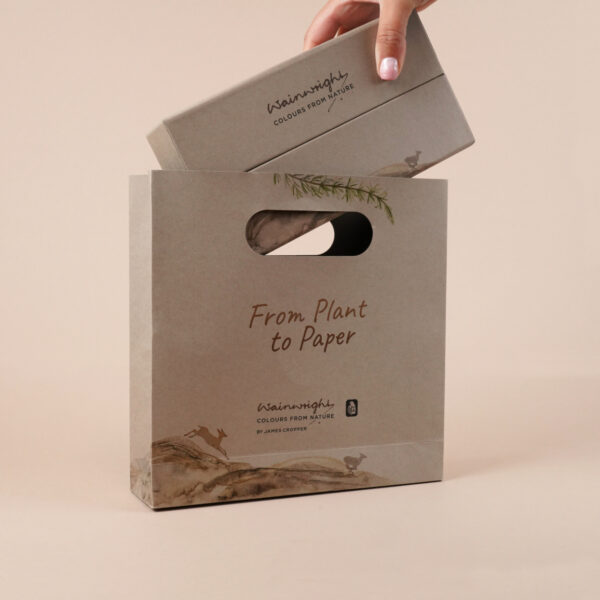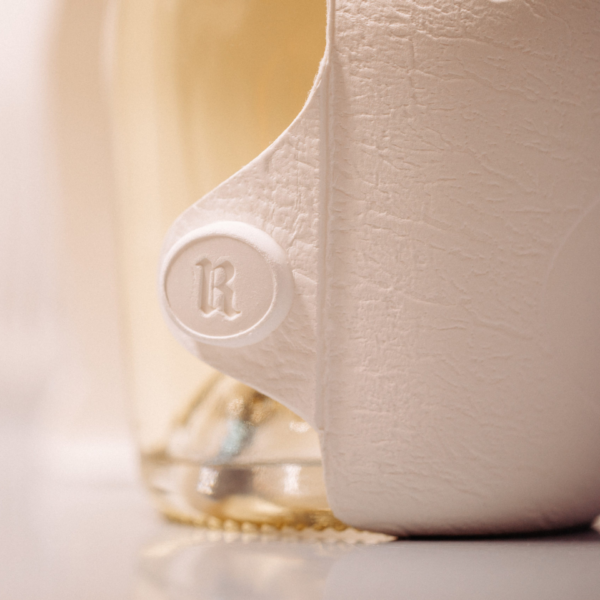
Speciality Paper Insights with Print Monthly

Rebecca Farish, Product Manager, James Cropper Paper & Packaging, sat down with Print Monthly for their Speciality Paper feature; she was asked 5 questions regarding paper selection, innovation and sustainability within the industry.
Q:
Could you introduce your company and its role/work in the specialty paper market?
A:
James Cropper is a market leader in advanced materials and paper products. Led by the Cropper family for six generations, the business has an international workforce and an operational reach in over 50 countries.
Established in 1845, James Cropper Papers supplies the Speciality Paper market with a world leading range of coloured and embossed papers, and unique sustainable fibre options including CupCycling. In addition to supplying custom-made Speciality Paper products and packaging for many of the worlds leading luxury brands and designers, the business produces creative papers for its merchant partners for premium print and publishing applications.
Established in 1845, James Cropper Papers supplies the Speciality Paper market with a world leading range of coloured and embossed papers, and unique sustainable fibre options including CupCycling. In addition to supplying custom-made Speciality Paper products and packaging for many of the worlds leading luxury brands and designers, the business produces creative papers for its merchant partners for premium print and publishing applications.
Q:
How much can a premium paper affect a print project?
A:
The truth is, despite living in an increasingly digital world, consumers still crave that hands-on experience and this needs to be nurtured when looking to deliver a memorable experience that can elevate a print project.
The colour and type of paper selected needs to align with the message the organisation is trying to portray, and the expectation of the consumer. For example, environmental and sustainable marketing materials may lean towards a base stock in a natural colour palette with a high recycled content to help reinforce the messaging. Whereas, if an organisation is trying to convey luxury, a higher quality of paper with a distinct look or textural feel can add a tangible tactile element to the experience.
Luxury brands often play off black and white base colours as a canvas for the printed message. An uncoated quality has a more natural look and feel. However, for something unique a custom colour can help grab attention with stand-out appeal, and also has a role to play with brand identity and recognition; a great example of this is our latest partnership with Coty to elevate circularity of the Chloé perfume packaging.
The quality of the print will also influence how the material is received and experienced by the consumer. Both the paper and the print need to work seamlessly together.
The colour and type of paper selected needs to align with the message the organisation is trying to portray, and the expectation of the consumer. For example, environmental and sustainable marketing materials may lean towards a base stock in a natural colour palette with a high recycled content to help reinforce the messaging. Whereas, if an organisation is trying to convey luxury, a higher quality of paper with a distinct look or textural feel can add a tangible tactile element to the experience.
Luxury brands often play off black and white base colours as a canvas for the printed message. An uncoated quality has a more natural look and feel. However, for something unique a custom colour can help grab attention with stand-out appeal, and also has a role to play with brand identity and recognition; a great example of this is our latest partnership with Coty to elevate circularity of the Chloé perfume packaging.
The quality of the print will also influence how the material is received and experienced by the consumer. Both the paper and the print need to work seamlessly together.
Q:
What are some of possibilities printers and creatives agencies can think about when choosing speciality paper?
A:
The main ones are colour and surface texture.
There are a wonderful array of premium coloured papers available off the shelf, in weights suited to various print applications. From ultra smooth qualities to those with a toothier surface finish, and also options with an embossed surface texture.
At James Cropper we specialise in making natural uncoated papers. Our Vanguard range is a collection of smooth uncoated coloured papers for premium print and our Rydal Packaging Collection has been designed for premium packaging applications. We also offer a custom papermaking service, and can produce papers to order in terms of colour, texture, surface finish, and weight suited to specific applications. With an in-house converting facility there is also the option of heavy-weight boards up to 3mm thick, and even duplex qualities (with a different colour on each side).
There are a wonderful array of premium coloured papers available off the shelf, in weights suited to various print applications. From ultra smooth qualities to those with a toothier surface finish, and also options with an embossed surface texture.
At James Cropper we specialise in making natural uncoated papers. Our Vanguard range is a collection of smooth uncoated coloured papers for premium print and our Rydal Packaging Collection has been designed for premium packaging applications. We also offer a custom papermaking service, and can produce papers to order in terms of colour, texture, surface finish, and weight suited to specific applications. With an in-house converting facility there is also the option of heavy-weight boards up to 3mm thick, and even duplex qualities (with a different colour on each side).
Q:
What new innovations/products are coming out in this sector?
A:
It is fair to say that design with sustainability in mind is high on the agenda for brands in every sector. In today’s world, the focus on the provenance of products, and leaving little to no trace on the planet means that paper products are emerging as a shining example of best practice for circular design - and as a business we have been focused on helping brands to elevate circularity for their projects.
From the world’s first technology to upcycle used coffee cups, to the industry leading incorporation of used jeans into fully recyclable paper for packaging - transforming waste into beautiful paper is at the core of James Cropper’s FibreBlend Upcycled Technology mission.
In an industry first we launched a coloured paper range using natural dye derived from plant extract. The Wainwright Colours from Nature range is one of our latest innovations which create value from waste streams without compromise on technical performance. The colours are derived from rosemary residue, a waste stream in food production, for this 100% FSC® recycled paper range.
From the world’s first technology to upcycle used coffee cups, to the industry leading incorporation of used jeans into fully recyclable paper for packaging - transforming waste into beautiful paper is at the core of James Cropper’s FibreBlend Upcycled Technology mission.
In an industry first we launched a coloured paper range using natural dye derived from plant extract. The Wainwright Colours from Nature range is one of our latest innovations which create value from waste streams without compromise on technical performance. The colours are derived from rosemary residue, a waste stream in food production, for this 100% FSC® recycled paper range.
Q:
How does speciality paper fare from a sustainability point of view compared to other paper options?
A:
The feverish focus on sustainability in the paper and packaging world is no secret. Neither is it exclusive to this industry. But as we all work on ways to leave little to no trace on the planet, over our shoulder, the need for performance and beautiful design is still very much present. There is no compromising on aesthetics and functionality while we work on circularity. If anything, demand for premium papers which deliver functionality for the converter or printer, and brand experience to the end user is only growing.
Paper is sustainable by design. With the product cycle for paper encompassing renewable resources and recycling after use, paper truly embraces the principles of the circular economy. However, it’s also worth noting that a key element of a healthy eco system, is a balanced stream of fresh and waste fibre to keep the paper cycle working.
There is a place for all paper fibre options on the table to suit different applications. And when looking at the full life cycle for paper the stats stack up. The innovations we are all driving in the paper and printing sectors, commitment to sustainable management of our forests, the delivery of sustainable products, show the resilience of the industry, while we all play our part on the journey to net zero.
Paper is sustainable by design. With the product cycle for paper encompassing renewable resources and recycling after use, paper truly embraces the principles of the circular economy. However, it’s also worth noting that a key element of a healthy eco system, is a balanced stream of fresh and waste fibre to keep the paper cycle working.
There is a place for all paper fibre options on the table to suit different applications. And when looking at the full life cycle for paper the stats stack up. The innovations we are all driving in the paper and printing sectors, commitment to sustainable management of our forests, the delivery of sustainable products, show the resilience of the industry, while we all play our part on the journey to net zero.
Explore our paper
Related









